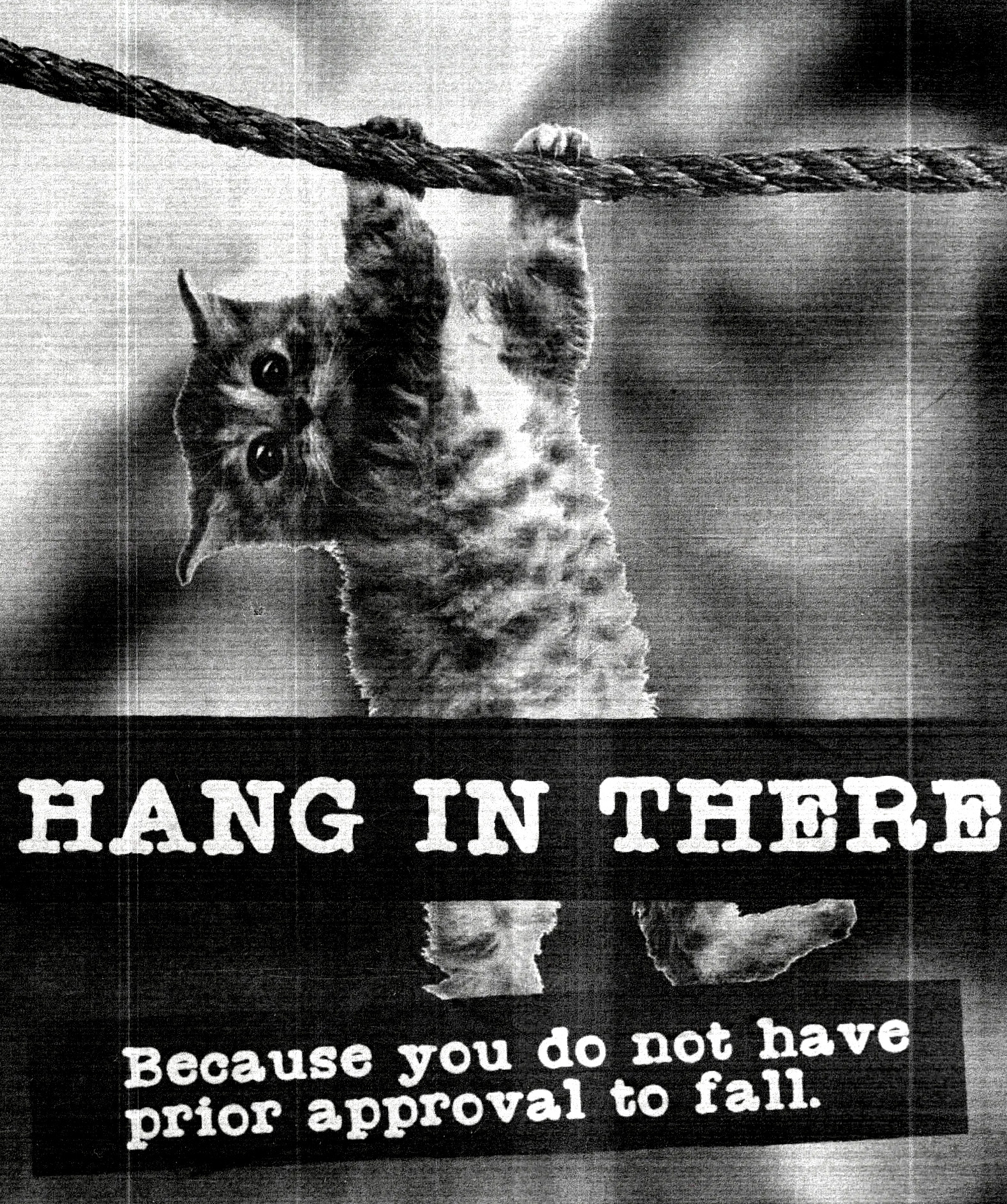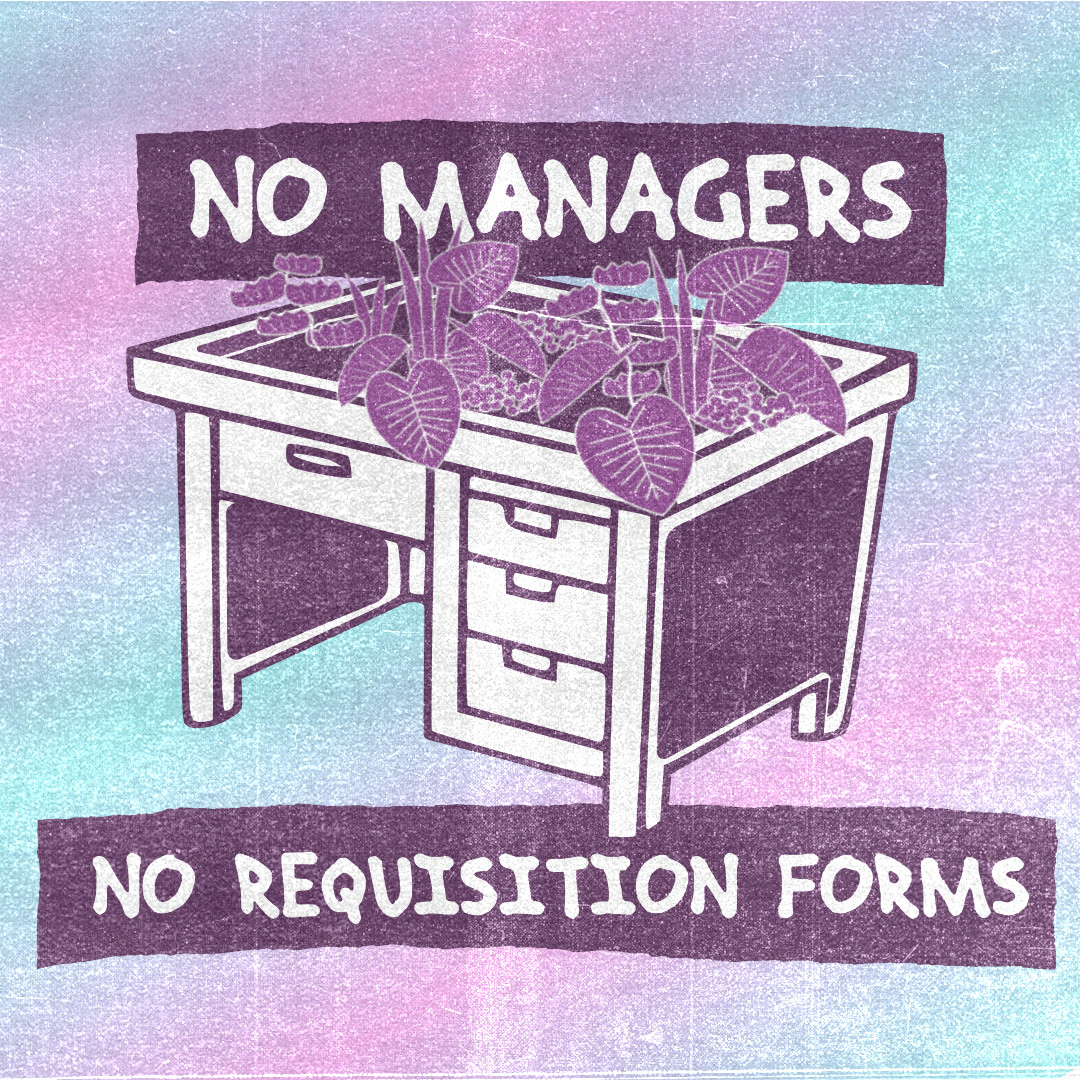Friends, let’s talk about work. Can you think of an obviously wrong or pointless decision made by the people in charge? I can think of so many, just from this past week. But also from every job I’ve had. Even at good jobs where I’ve really liked the people in charge. Maybe some of these are familiar:
Exciting projects that were axed for flimsy reasons
Programs that seemed to have no purpose except to make a single board member happy
Diversity intiatives that got sidetracked by department directors worrying about 3rd order effects
Elaborate approvals needed to spend even small amounts of money
.Pejorative remote work policies that seem to worry more about where people are, rather than what they get done.
Things like this get in the way of ACTUALLY DOING THE WORK. And they are everywhere. From places that are mired in toxic work cultures, to places where good, capable people are really trying to make a positive difference in the world. I’m pretty sure that despite my best efforts, reading a shelf full of management books, and having a well-used subscription to the LinkedIn Learning leadership series, I’ve contributed my own clueless decisions. It’s like we’re trapped in a hall-of-mirrors version of The Office where anyone can become Michael Scott at any moment.

Although these frustrations seem like an inescapable part of working with other people, I think they are in fact a consequence of organizing people into a pyramid structure, where the people above make decisions and the people below follow orders.
What if it doesn’t have to be this way? There are ways of organizing that get decisions out of the grip of the bosses and into the hands of everyone else. There is a simple and effective approach called the advice process, which leads to better decisions, less frustration, happier workers, and less frazzled leaders.
But that is just the beginning of what the advice process makes possible. It is the foundation for a whole new kind of organization built from the ground up on respect and trust. The advice process can help create organizations without nonsensical assignments, demeaning policies, or meaningless reports, in short, without management. I can almost hear the all Dilbert cartoons from all the cubicle walls coming unstuck and floating to the ground to turn to mulch.
Here are the basics of the advice process:
A better world is possible. Subscribe to learn how to build it!
How decisions are made
The advice process has two pillars:
First: The person closest to an issue makes the decision about what to do about it. It might be the person who notices the problem, the person who is most effected by it, someone who’s excited to figure it out, or just someone with the time and energy to deal with it. They don’t have to be assigned to solve the problem and they don’t need to be at a certain pay grade. They don’t need to cross reference a decision matrix, fill out a TPS report, or shake a magic 8-ball until it gives them the go-ahead. In principle anyone can take up any decision, no matter how big or small.
Second: The person making the decision needs to get advice from everyone effected by the problem, anyone with a stake in the outcome, and anyone with useful information. They don’t have to make a decision that everyone agrees with, but they do have to take the advice seriously. This means that the bigger the decision, the more people weigh in with ideas. But at same time, since the decision still rests with one person, it doesn’t get bogged down in endless debate. Once the decider figures out the best course of action, they don’t need to write a proposal or make a presentation to leadership. They just make the decision.
For example: If a big machine tool in a metal shop is wearing out, the person who uses the machine decides how and when to fix or replace it, though they would talk to other people who might use the machine, folks who recently replaced a similar tool, people who have an good understanding of the shop’s cash flow, and so on. Once they’ve done this, they just make the decision. They don’t need to get a purchase order approved. A senior person can’t suddenly cancel the order or change the decision. The person closest to the problem just gets it done. Since they use the machine, they know what they need. And since they’ll be stuck with whatever they pick, they take the task seriously.
In a real life example at a French brass foundry, called FAVI (more on this company later), someone’s main job was no longer needed, so she started talking to people across the company to find a new way to contribute. Once she found something that seemed useful and a good match, she reassigned herself. She didn’t have to request a transfer or go through a complex HR re-grading process. She just came to work and did the new job she’d found.
It’s simple, which is not to say that it is easy. Check out the resources at the end for more detailed info on how exactly this works in practice.
Why would we do anything else?
In some ways this seems like an obvious way to do things. Who else but the person closest to an issue should decide what to do about it? How could anyone else do a better job solving it?
If I think back on my own work experience, most worthwhile things actually followed an unacknowledged advice process. Someone saw a problem and came up with a way to fix it.
However, official structures don’t often support this—many actually prevent it—so buttom-up decisions end up either flying under the radar, surreptitiously fixing things, or they go through an often torturous proposal and approval process to make it seems like the real decision was made by the people in charge. Has this ever happened to you?
Suspicion or trust?
Most organizations share a decision-making model that is exactly the opposite of the advice process: The people at the top of the organization make the decisions, the people lower in the organization carry them out. Everything about the rest of the organization is driven by this underlying model. The pointless meetings, uninformative reports, unrealistic project briefs, time consuming requisition forms, demeaning time cards, patronizing incentive/discipline regimens, and disingenuous team-building exercises are all attempts to make the model work and patch up the problems that arise.
Maybe somewhere at some point this approach has worked. But in general, my experience is summed up by David Graeber: “[top-down chains of command] tend to promote stupidity among those on top and resentful foot-dragging among those on the bottom.” (Debt, pg 96)
The contrast with the advice process points to why this happens. The standard organizational system is based on some unflattering assumptions about workers:
They can’t be trusted.
They are selfish and short sighted.
They are incapable of complex thought.
They are lazy.
No one spells out these assumptions in the employee manual or on posters on the break-room wall, but top-down decision-making structures shout this dim view at workers. When I think back to the worst decisions handed down to me from management, I realize that they were so frustrating because they highlighted this kind of perspective (in contrast with the purported wisdom of the people in charge).

The advice process embodies the opposite ideas:
People are capable, creative, and competent,
want to make a positive contribution,
are willing to work hard on things that matter,
and can navigate complex and ambiguous situations.
And unlike the platitudes of a new employee training video, the advice process actually puts this view into practice. And it turns out that people learn to act the way they are expected to. People who are treated as if they were selfish and lazy, soon start acting that way. People who are trusted to be capable and generous rise to the occasion.
This actually works
The advice process isn’t an unrealistic model, only to be used by marginal groups of idealists. It works well. Really well.
It’s used in real organizations that have ended up totally transforming, based on principles the process introduced. Here are two examples, drawn from Frederic Laloux’s book Reinventing Organizations:
Buurtzorg— Home healthcare in the Neatherlands. There are 7,000 employees working in neighborhood teams of 10-12 people with no bosses. Each team is self-managing (with no team leader). Teams collaborate when needed. A small central office provides services and advice for the teams (only when requested), but does not direct them. By all accounts they offer great care, at a lower cost, pay the providers above average, and result in amazing job satisfaction reports.
FAVI— A French brass foundry that is one of the only remaining car part manufacturers in Europe. The 500 employees are organized into mini-factories of 21-35 people. The teams are self organized, with no middle management. Each team democratically creates its own rules or procedures. The company has virtually no central staff functions– no HR, IT, scheduling, or purchasing departments. There are no time cards or externally imposed performance mesurements. The supply rooms are all unlocked and anyone can take the keys to a company car or truck at any time. Workers even make decisions about how to respond to business down-turns, including sometimes temporarily reducing their own pay or hours. They have been amazingly successful with this structure. They deliver 50% of the entire market for gearboxes in Europe and haven’t missed a single delivery deadline in 25 years.
There are many more examples. And each would be worth looking at in detail.
I find these examples heartening. These organizations offer a model for a completely different way of bringing people together to accomplish things. They have found that by getting decision-making away from bosses and managers and radically trusting workers, they can do better work, provide goods and services for less, pay employees more, and are by all accounts much better places to work.
This sounds like a fine way to work. Sign me up! I’m sure we’ll be able to find some new cartoons to put up in the breakroom.

Do you see places at your work where things would be better if the folks doing the work were allowed to make the decisions? Let me know in the comments!
There are practical steps to putting the advice process in place where you work. Here are some resources to learn more about how to do it.
I first came across advice process because folks from the Rainier Valley Corps (RVC) (now called Rooted in Vibrant Communities) in Seattle were blogging about it:
Vu Le. “Our Default Organizational Decision-Making Model Is Flawed. Here’s an Awesome Alternative!” Nonprofit AF (blog), December 3, 2018.
Ananda Valenzuela. “Sick of Both Consensus and Hierarchical Decision-Making? There Is a Third Way.” RVC, September 13, 2017.
Here are two books with extended discussions of the advice process:
Dennis Bakke. Joy at Work: A Revolutionary Approach to Fun on the Job. Seattle, WA: PVG, 2005.
Laloux, Frédéric. Reinventing Organizations: A Guide to Creating Organizations Inspired by the next Stage of Human Consciousness. First edition (revised)., 2014.
And two more resources:
Sjoerd Kessels. “Favi, a Metal Foundry Putting Employees First.” Adaptive Organization (blog), January 18, 2019.
Equal Experts, “The Advice Process Playbook.”.



